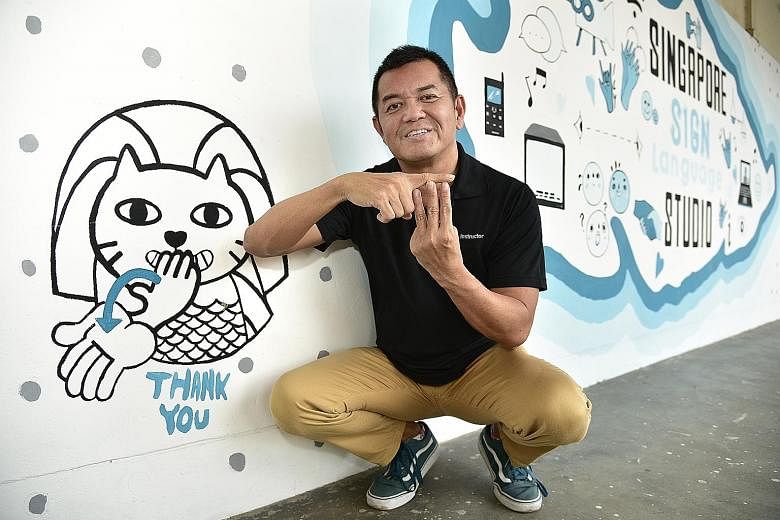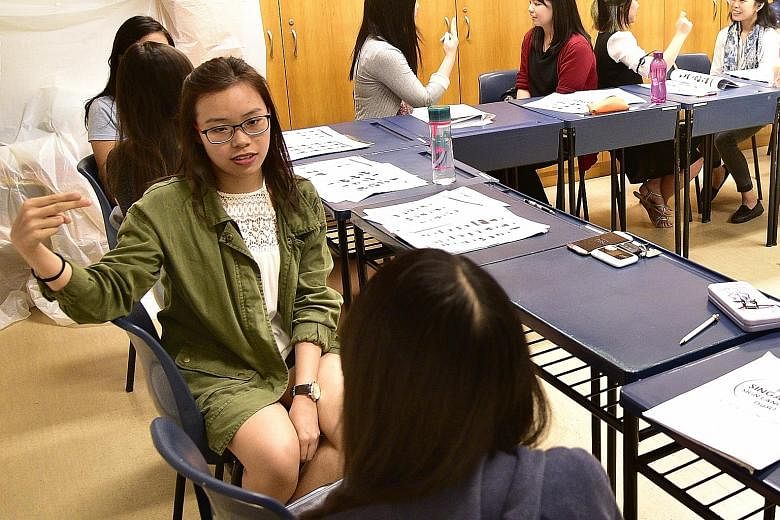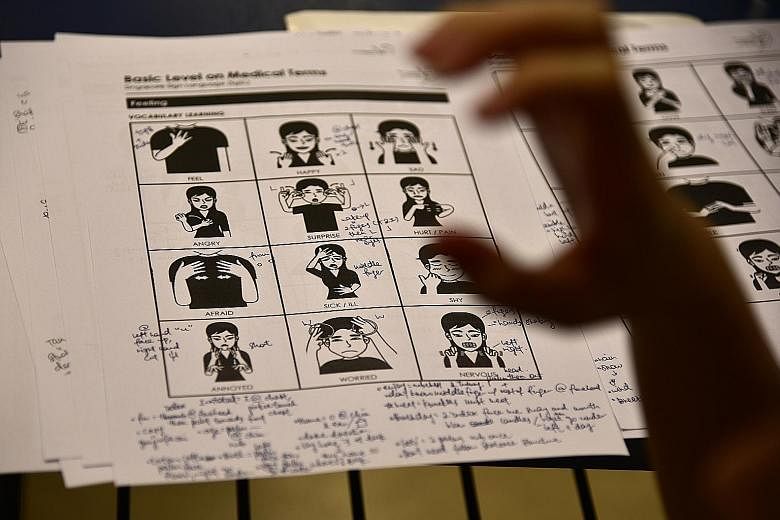Sign language is not spoken, but if it were, its volume has certainly increased in recent years.
Since 2012, live sign language interpretation has been used for Prime Minister Lee Hsien Loong's National Day Rally speeches.
Since 2015, it has been used for Budget speeches in Parliament too.
That year, a series of 109 general election-related sign language videos was also produced by the Singapore Association for the Deaf (SADeaf) and uploaded on YouTube in response to feedback and a growing interest in politics from people with hearing loss.
Those videos showed the signs for political terms such as "group representation constituency" and "non-constituency MP", as well as the nine political parties.
Last year, for the first time, a deaf performer led 150 special needs participants and a 55,000-strong crowd at the National Day Parade in using sign language to represent the lyrics of Home and Count On Me, Singapore.
Sign language is not universal and differs across countries. The language used here is the Singapore Sign Language (SgSL).
It has developed over the past six decades, since the setting up of the Singapore Chinese Sign School for the Deaf - the first such school for deaf people here - in 1954.
-
About SgSL
-
ORIGINS
Singapore Sign Language has evolved since the Singapore Chinese Sign School for the Deaf - the first such school for deaf people here - was set up in 1954.
It is a combination of Shanghainese Sign Language, American Sign Language, locally developed signs and Signing Exact English, which is a system of word-for-word signing that follows the English sentence structure.
NUMBER OF SIGN LANGUAGE USERS
The Singapore Association for the Deaf (SADeaf) has more than 5,300 clients who are deaf or hard of hearing. Among them, a third stated that they know sign language, while the rest admitted they do not know or did not give a response when asked.
There are also people without hearing loss who go for sign language classes.
WHERE TO LEARN IT
Sign language classes are conducted at SADeaf's premises in Mountbatten Road. For more information, go to sadeaf.org.sg/sgsl-course/
Priscilla Goy
It is influenced by Shanghainese Sign Language, American Sign Language, locally developed signs and Signing Exact English - a system of word-for-word signing which follows the English sentence structure and is not used widely for communication.
SgSL is not specific to expressing only English words and can be used for Chinese, Malay or Tamil words. The sign for "chair" is the same in English, Chinese and other languages, for instance.
SADeaf executive director Sylvia Teng told The Straits Times: "SgSL, like all other sign languages elsewhere, evolves organically from local deaf people over time, in consultation with prominent deaf individuals from varied backgrounds.
"As part of our SgSL research and development, we have regular consultation sessions involving members of the community."
Sign language instructor James Ong, an executive for deaf access services at SADeaf, explained that some signs for local terms are based on the iconic shapes of buildings.
For instance, the sign for Marina Bay Sands is to show three fingers of one hand - to represent the three hotel towers of the integrated resort - and place the index finger of the other hand on top, to represent the rooftop SkyPark.
Some words can be signed in multiple ways. For instance, there are three signs for Gardens by the Bay: one involves signing the letters "GBB"; another sign implies there are many trees; and the third mimics the structure of the Supertrees, which are vertical gardens with large canopies. There are also signs for local food such as nasi lemak, Singlish terms like "shiok", and terms that entered the English lexicon in more recent years, such as "Facebook" and "GrabTaxi".
SADeaf estimates that there are 500,000 people in Singapore with varying degrees of hearing loss.
Ms Teng said the charity has had a gradual increase in the number of clients over the years. It now has more than 5,300 clients who are deaf or hard of hearing. Among them, a third disclosed that they know sign language, while the rest admitted they do not know or did not give a response when asked.
With greater awareness of the language, she said, there has been a "surge in enquiries and participation" in its sign language classes.
Registration has closed for all five introductory level classes, which start later this month, as places have been filled. Each class typically has 15 places. Fees for 12 two-hour sessions are $150 for SADeaf members and $180 for non-members.
Ms Teng said the classes are mainly for those who can hear and are keen to learn the language or interact with people with hearing loss. "It is also for professionals who need to communicate with the deaf or hard-of-hearing community in their course of work, such as those in the medical field, and for families who may have a deaf sibling, spouse or friend."
Meanwhile, SADeaf is working on a mobile app to promote SgSL.
Last month, 14 allied health students learnt sign language over eight lessons. They learnt signs for basic words like "hello", and medical terms such as "pain" and "doctor".
Ms Arinah Adli Yashir, 20, who is studying physiotherapy in an Australian university, said she signed up for the class as she enjoys learning languages and felt sign language was "something different".
"I think it would also help me in future when I'm a physiotherapist... Though I may not be as fluent as a deaf person, a little sign language vocabulary could still be helpful along the way," she added.
"Before this class, I thought deaf people communicated by finger-spelling each word and I was a bit intimidated by that. I realise they have a picture in mind, which they form using their hands."




